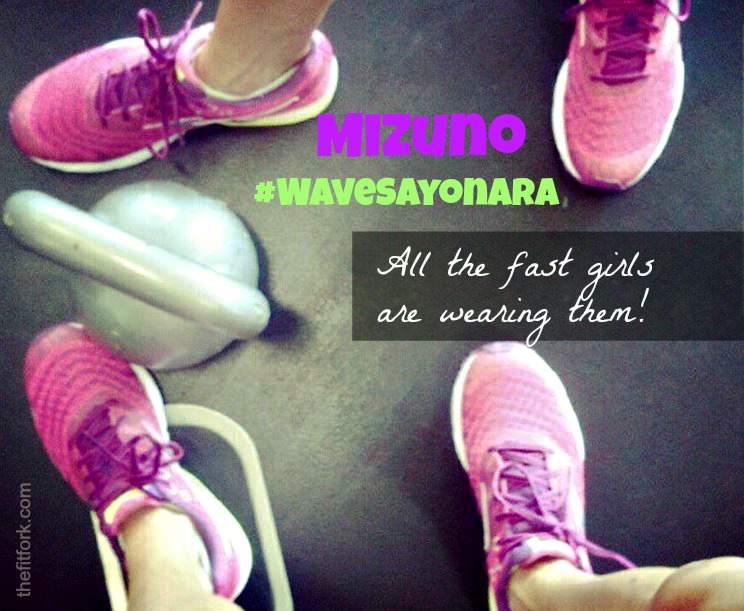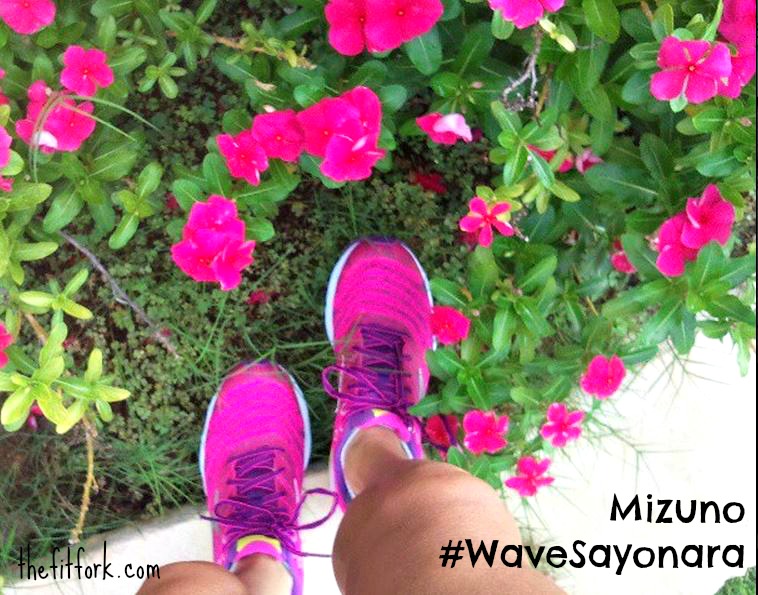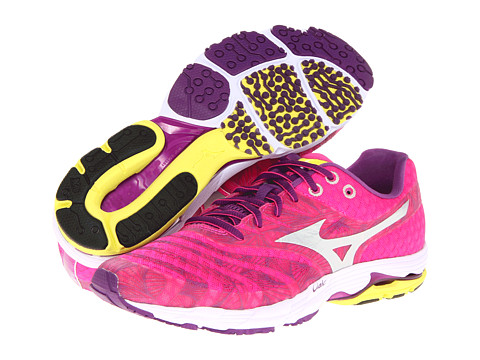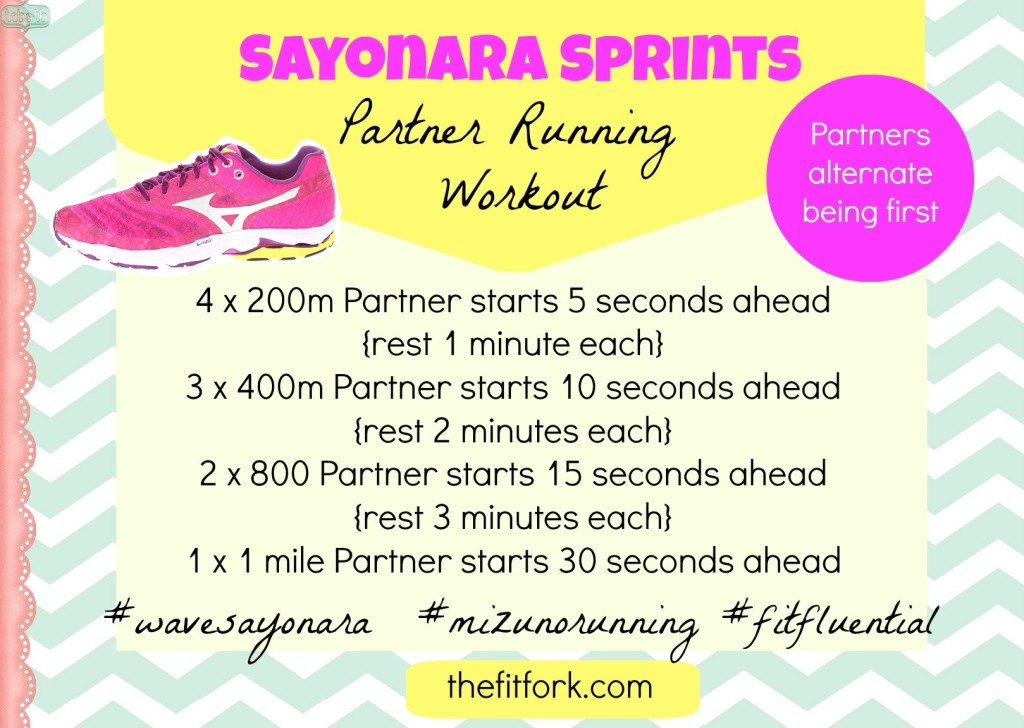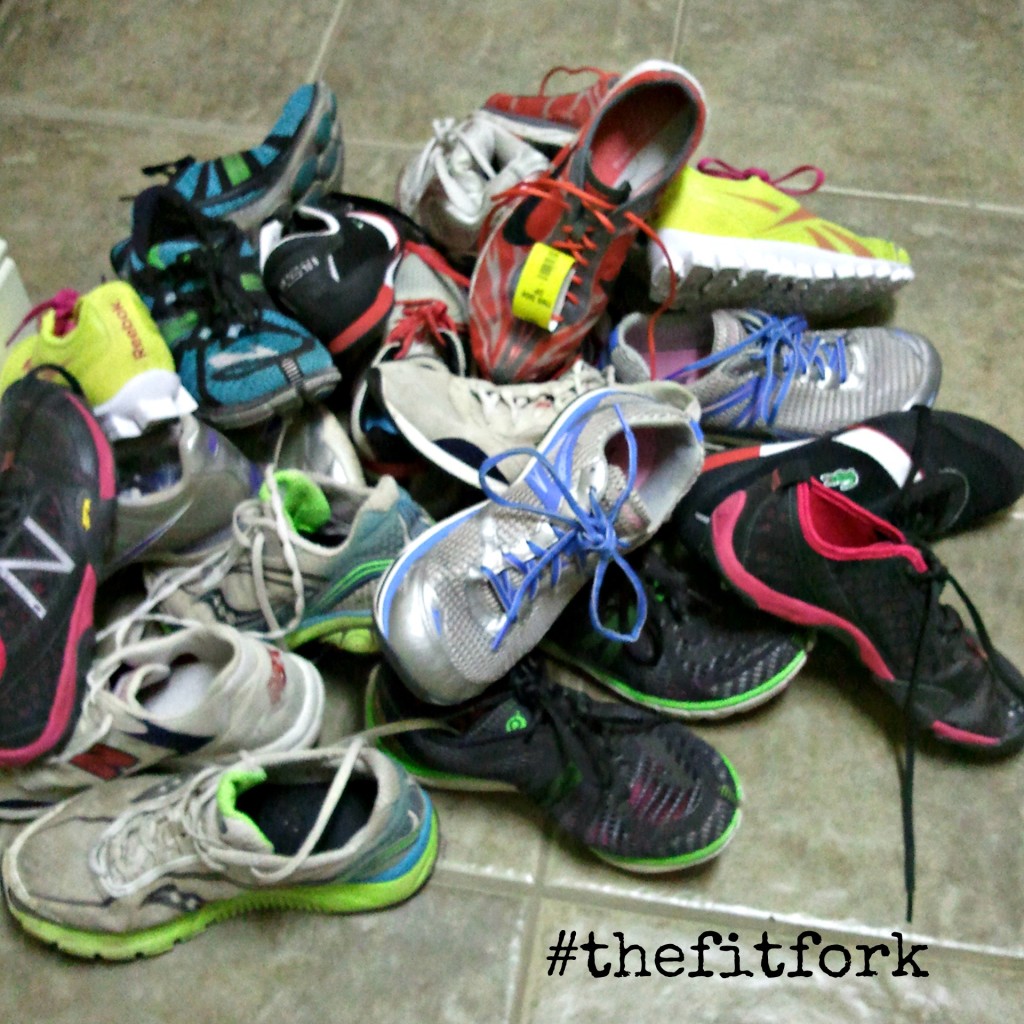The following post is sponsored by Fitfluential LLC on behalf of Mizuno. Now that that declaration is out of the way, I have to say that I love running and I extra-super love getting new running shoes — especially when the kicks are pink and from a brand that has served me well. Thank you Mizuno for the new Mizuno Wave® Sayonara running shoes; these little beauties will be helping me run pretty and pretty fast all summer long!
I’ve had some experience with some of the newer products in the company’s lineup, having run in the both the Mizuno Wave Evo Cursaris (6.2 oz) and the Mizuno Wave Evo Levitas (5.2 oz), two products that target the minimalist, mid-foot runner like myself. (Update: both theses shoes have been discontinued). By the way, about three years ago, I worked with Master Pose Method Coach, Valerie Hunt, to “tweak” my running form from heel-striker to mid-foot striker – I’ve had both reductions in injury (basically none) and improvements in my time (factoring for age). Both of these shoes I just mentioned have a zero drop (or, as they say “zero ramp offset”) from heel to mid-foot, with the Levitas being lighter and closer to the ground of the two.
Anyway, back to the new Wave® Sayonara, the shoe I am reviewing today. Mizuno is touting this shoe, which officially releases online or at a running store near on July 5th, as the “lightest everyday training shoe yet.” The women’s version hits the scales at 7.1 ounces, making it actually not as light as the EVO line, but also not as stripped down. I’ve run in the shoes several times now, and I actually like them quite well. I definitely notice a little more structured and supportive feel than the EVO line, but they not at all clunky. In fact, I had a pretty speedy tempo workout in them yesterday and felt the ride was right-on and responsive to the feedback I like to get from strike-off. While not “zero-drop” like the EVO line, the heel to mid-foot is noticeably lower and the weight significantly lighter that some of the other popular models on the Mizuno roster including the Rider and the Precision. I would definitely consider wearing the Wave® Sayonara in a longer race like a full marathon but probably stick my current race shoe of choice, the Wave® Ronin 5 (5.8 oz) for half marathons.
Another thing I noticed and like about the Wave® Sayonara is the blow rubber sole that features lightweight yet superior traction. Not many people check out the bottom of their shoes when shopping, but I definitely do. It’s because I hate that feeling like I might slip in a race when the roads are wet from rain or high humidity. The uppers are fun, with a bright modern vibe that looks great with all my other running gear. There are rolling out on July 5th with an ARV of $119.
So, if you’re looking for a fun running workout to do in your new Mizuno Wave® Sayonaras (or any running shoes you love), try my Sayonara Sprint Partner Running Workout. The idea of the interval-style workout is that one runner gets a head start on the other — sayonara sucker! After the prescribed amout of time, the second runner starts the interval, trying to catch up! While it might make for a challenging day at the track; remember, you get to share the experience with a friend which in my experience reduces the perceived effort! If this workout doesn’t suit you, check out my One-Derful One-Mile Repeat WOD!

